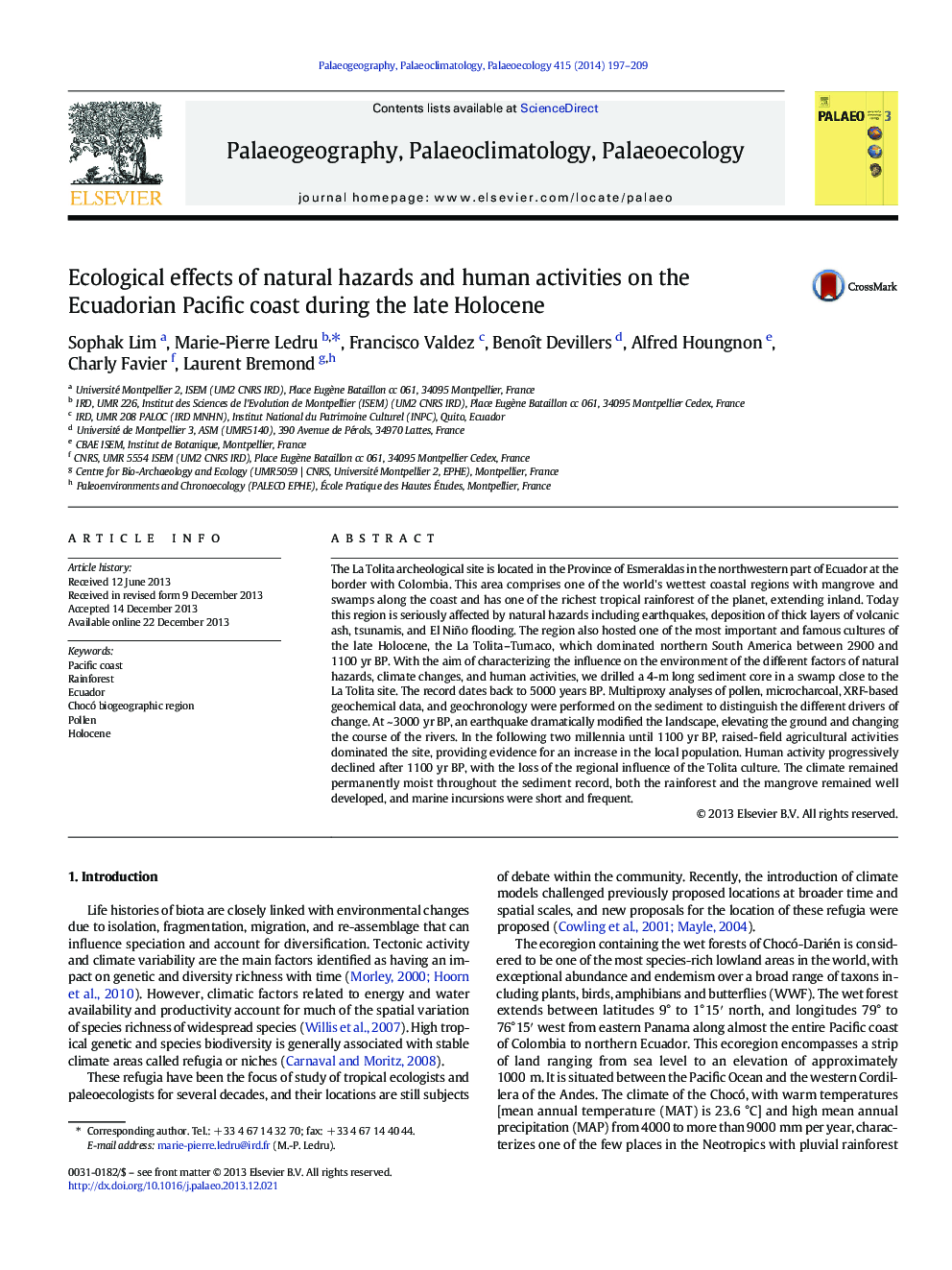| کد مقاله | کد نشریه | سال انتشار | مقاله انگلیسی | نسخه تمام متن |
|---|---|---|---|---|
| 4466177 | 1622175 | 2014 | 13 صفحه PDF | دانلود رایگان |
• A sediment core on coastal eastern Pacific dates back to 5000 cal yr BP.
• XRF, stereomicroscopic, charcoal and pollen contents were analyzed.
• At ~ 3000 yr BP an earthquake induced changes in fluvial and geomorphological features.
• Increase of human activities was observed between 2980 and 1170 cal yr BP.
• Climate conditions have not changed in the Chocó region during the past 5000 years.
The La Tolita archeological site is located in the Province of Esmeraldas in the northwestern part of Ecuador at the border with Colombia. This area comprises one of the world's wettest coastal regions with mangrove and swamps along the coast and has one of the richest tropical rainforest of the planet, extending inland. Today this region is seriously affected by natural hazards including earthquakes, deposition of thick layers of volcanic ash, tsunamis, and El Niño flooding. The region also hosted one of the most important and famous cultures of the late Holocene, the La Tolita–Tumaco, which dominated northern South America between 2900 and 1100 yr BP. With the aim of characterizing the influence on the environment of the different factors of natural hazards, climate changes, and human activities, we drilled a 4-m long sediment core in a swamp close to the La Tolita site. The record dates back to 5000 years BP. Multiproxy analyses of pollen, microcharcoal, XRF-based geochemical data, and geochronology were performed on the sediment to distinguish the different drivers of change. At ~ 3000 yr BP, an earthquake dramatically modified the landscape, elevating the ground and changing the course of the rivers. In the following two millennia until 1100 yr BP, raised-field agricultural activities dominated the site, providing evidence for an increase in the local population. Human activity progressively declined after 1100 yr BP, with the loss of the regional influence of the Tolita culture. The climate remained permanently moist throughout the sediment record, both the rainforest and the mangrove remained well developed, and marine incursions were short and frequent.
Journal: Palaeogeography, Palaeoclimatology, Palaeoecology - Volume 415, 1 December 2014, Pages 197–209
